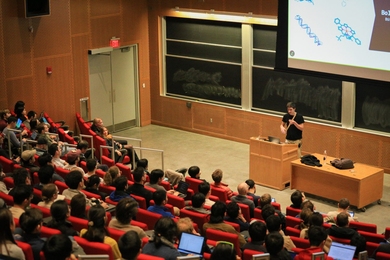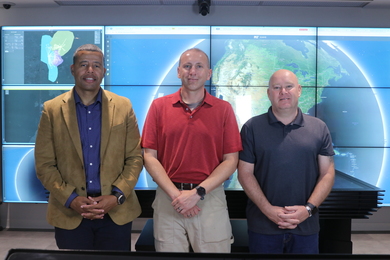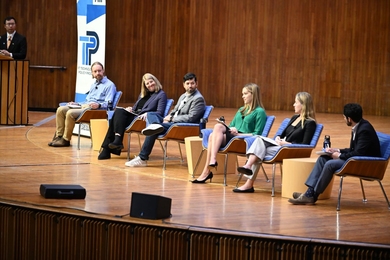MIT has received a gift of $80,000 from Eastman Kodak Company of Rochester, NY, in support of the MIT Museum's Holography Program.
George M.C. Fisher, Kodak's chairman, president and chief executive officer, said that in assuming the role of principal sponsor of the program, "Kodak continues its long tradition as an active advocate for innovative imaging technologies."
Dr. Paul E. Gray, chairman of the MIT Corporation, said that the Kodak gift "will support this important collection, sustain related exhibitions and establish a significant educational component to complement the collection."
The MIT Museum acquired the complete holdings of the Museum of Holography-the largest and most comprehensive collection of holograms in the world-in January 1993. The collection includes approximately 1,500 holograms by Emmett Leith and Juris Upatnieks, Yuri Denisyuk, Stephen Benton, Rudie Berkhout, Harriet Casdin-Silver, Sam Moree, Dieter Jung, Margaret Benyon, Dan Schweitzer and many other internationally renowned holographers. It also features a number of historically, technically and artistically significant artifacts, including the first laser hologram, the first white-light hologram and early examples of reflection and integral holography, as well as documentary material from the laboratory of Dennis Gabor, who was awarded the Nobel Prize in Physics in 1971 for his invention of holography.
Warren A. Seamans, director of the MIT Museum, said MIT was an appropriate home for this collection.
Many important advancements in holographic research have emerged from the Spatial Imaging Group of the MIT Media Lab, he said, and artists associated with MIT's Center for Advanced Visual Studies have made exceptional contributions to the artistic development of holography.
The MIT Museum is committed to keeping pace with artistic, educational and technological advances in holography and will make every effort to build the collection with new acquisitions-from historic artifacts to the work of artists breaking ground in the field. In the last 18 months, Mr. Seamans said, the Museum has acquired a wealth of significant pieces including materials from Mr. Denisyuk, Mr. Leith and Juris Upatnieks, three of holography's founding scientists.
The first exhibition of the collection, entitled Holography: Artists and Inventors, opened earlier this spring at the Museum's main exhibition center. The show explores the holographic universe from its inception in the late 1940s through its artistic and technical evolution and highlights works by some of the world's foremost holographers. Incorporating more than 70 pieces from the collection, the exhibition examines three facets of holography: the artistic, the technical and the historical. Mr. Seamans describes the exhibition as "perpetually evolving," meaning that the exhibition will be continually changing to incorporate other materials from the collections, new acquisitions, and pieces on loan.
Curated by holographers Betsy Connors and Stephen Benton, Holography: Artists and Inventors is designed to introduce the uninitiated to what Benton terms "the real virtual reality." Mr. Seamans agrees. "The holograms included here present such startling depth and interplay of color that visitors to the show may indeed feel that they've stepped into an altered reality," he said. Observed Ms. Connors, "Holograms generate an excitement and wonderment-especially in the first-time viewer-that cannot be compared with any other experience."
Before it closed its doors in 1992, the Museum of Holography had served for 15 years as the primary forum in the United States showcasing holography in its artistic, commercial and scientific applications. The Museum provided tours, demonstrations, and workshops about holography and was instrumental in introducing the field to the general public. The MIT Museum plans "to continue the work begun by Rosemary Jackson Smith, founder of the Museum of Holography, and the many staff members who worked to build that organization and its exemplary programs," Mr. Seamans said.
The MIT Museum, located at 265 Massachusetts Avenue in Cambridge, features exhibitions that illustrate an exciting relationship between art and technology. The museum has mounted several exhibitions of holography in recent years, primarily works from the Spatial Imaging Group of the Media Lab and the Center for Advanced Visual Studies. Admission to the Museum is $3 for adults, $1 for students, seniors and children, and free with an MIT ID. Hours are Tuesday- Friday, 9-5, and Saturday and Sunday, 12-5.
A version of this article appeared in the June 15, 1994 issue of MIT Tech Talk (Volume 38, Number 36).





